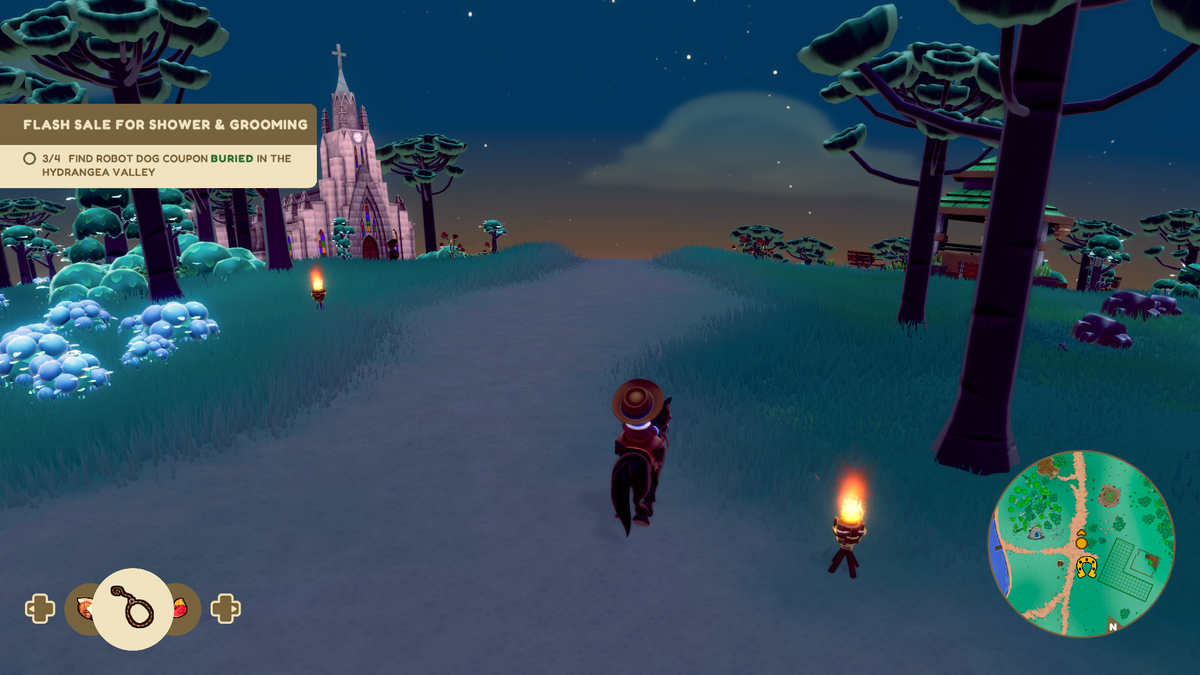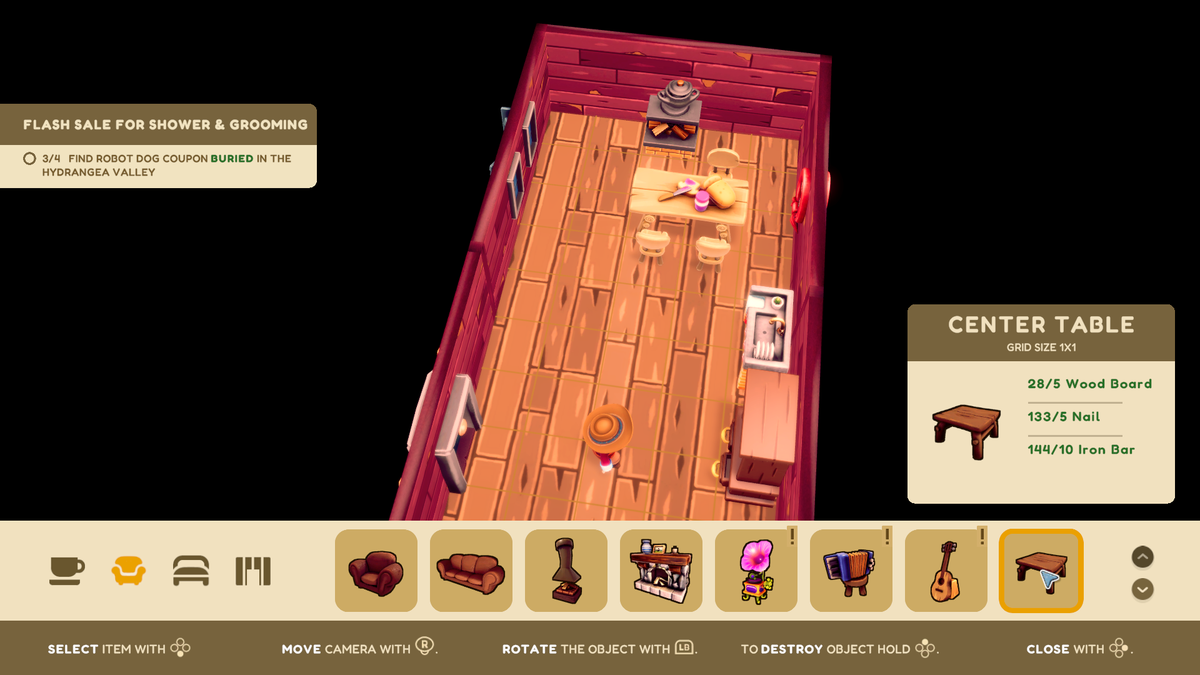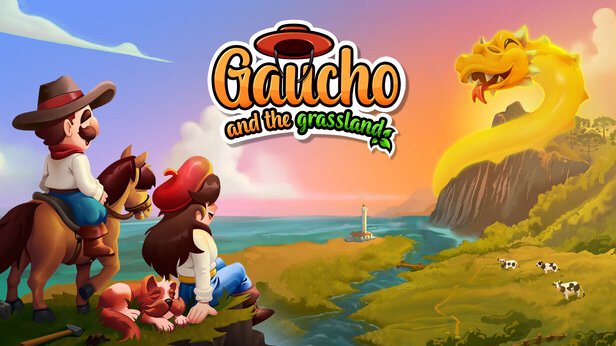A New Culture to Explore
When I first entered the world of Gaucho and the Grassland, I wondered, "Are there any cozy farm games that differ from the traditional Midwest American farm?" I found it strange that this genre has not explored other farming practices from cultures outside of its own, especially considering how agriculture plays a crucial role in every culture's history. Gaucho and the Grassland finally fills this gap by exploring Brazilian and South American gaucho culture, offering a refreshing perspective on ranch life in the pampas grasslands.
You start out near a grave of your dead father, who decides to pay you a ghostly visit and tells you to put on his hat. Once on, you become a Gaucho (meaning cowboy or herdsman). He tells you about his life protecting different regions and how they now need help from you so they can prosper once again.

Cleansing the Land
There are three different regions, and each one is in need of your help. A dragon-like creature hinders each area, preventing you from restoring it. Once you defeat the creature, you can open a door to a mythical area where a spirit that normally protects the land resides, and when you free it, the land returns to normal.
One of the main issues I encountered was the repetitive nature of the quests and challenges presented. I'm not saying Gaucho and the Grassland isn't necessarily fun, but by the time I was in the second region, I started to become bored, and nothing felt like a real challenge. I knew exactly what I needed to do in the third area before I even talked to anybody.
I thought, at first, that the story was following the typical route of a normal farming game, so I was taken aback when the mythical elements of the game began to emerge. There is also no economy, so you don't earn money but trade with villagers.
Becoming Rich Off the Land
Gaucho and the Grassland does not include farming for vegetables or fruits; it focuses entirely on livestock. You need to herd and breed cows, chickens, and sheep. This process allows you to collect products from the animals, such as milk, which you can then trade with others in the villages.
You can identify traders using the map, which works well initially; however, as more traders become available, their symbols do not appear for every character. Consequently, I had to search harder for some characters I needed to trade with. The map itself was well designed and pointed to every key point, but I wish I could have hovered over the traders to ensure they were the right ones with the material I needed instead of going back and forth.
When you go out to help other regions, your ghost dad helps you become acquainted with two companions you will be using frequently: your dog, Cusco, and Pingo, your horse. I appreciate having the horse available so early in the game. The dog is used to dig into random holes that you will discover throughout each area, where he will uncover items. The horse isn't just for riding, as you can wrangle up the animals you need to farm with it.

Helping to Build a Community
Once you have done enough quests, the villagers will start rewarding building plans and furniture that you can build. However, before you can place your first building, you will also need to purchase the land. This process was my favorite part of Gaucho and the Grassland. Each region had its own theme for the houses, and you are not restricted to a single region, allowing you to build whatever you want in each area.
You can go inside any place you build and furnish the whole area with chairs, stoves, couches, etc. I enjoyed the designs and how all the elements come together—building fences, wells, and light posts really enhanced the overall atmosphere of each area. The building options became repetitive, and after a while the areas started to look the same. There definitely needs to be more variety and maybe some more specific items for the regions. As of right now it is only the houses that change, and it isn't a huge change.
Always Room for Improvement
There were quite a few bugs as well that caused issues, not with progress within the game at least, but annoyances. For example, sometimes I couldn't command my dog to dig where there was a hole. If I were lucky, I could just go into the map and exit out, and everything would be fine. Not so lucky when I would have to reboot the game. This happened a lot with either my animal companions or even trying to build something where the object wouldn't show, so I either had to go in and out of the menu or do a complete reboot.
I was pleased to see that the developer notes said they were already addressing issues raised by the community. Epopeia Games actively engages with the community to address any pointed-out issues and make improvements. The game is about helping your community, so it makes sense that there isn't an economy to make you rich but to focus on rebuilding.
Overview
Although Gaucho and the Grassland has several areas that need improvement, I would still recommend the game to fans of cozy farm games. While the story itself is short, it is enjoyable, along with its chill atmosphere. I hope more developers see examples like this to explore genres, reach out to other communities and cultures, and help build new and original stories.
You can buy Gaucho and the Grassland on Steam for $20, which is a good price for what the game has going for it right now.
Disclosure: We received a free review copy of this product.


